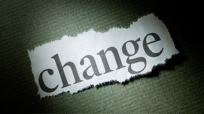First published March 27, 2008
An Interview with Richard Simmons about His Campaign for P.E. in Schools
 Tank top, striped shorts and all, Richard Simmons is becoming a force to be reckoned with in Washington's education policy debate. He has mounted a major campaign to get physical education into the schools and has caught the attention of key policymakers on Capitol Hill.
Tank top, striped shorts and all, Richard Simmons is becoming a force to be reckoned with in Washington's education policy debate. He has mounted a major campaign to get physical education into the schools and has caught the attention of key policymakers on Capitol Hill.
Amidst all this activity, he recently found time to talk me about his goals, the dire need for physical education and his frustration with the glacial pace of reform in Washington during an election year.
Richard told me about his advocacy for the FIT Kids Act, which would amend No Child Left Behind to require states, districts and schools to include the amount and quality of P.E. among the "multiple measures" by which schools are judged.
He makes no secret of his impatience with the current presidential contest, characterizing it as a political circus that drowns out calls to address the real crisis in children's health and fitness.
His own ideas for reform:
- Carve out real time in school for physical activity. The FIT Kids Act sets a goal of 150 minutes/week in elementary school and 225 minutes/week in high school.
- Enlist Certified Aerobic instructors to help P.E. teachers offer excellent physical education.
- Ensure that P.E. classes include warm up, cardio, strength training and stretching. Just hitting a ball or running around a field won't cut it anymore.
- Get kids moving to the music they love.
Calling himself "the black sheep of the fitness world," Simmons speculates that people won't take him seriously. His record so far belies that fear. He has taken his campaign to the major networks, inspired thousands of calls and emails to congressional offices, made more legislative progress than many professional advocacy organizations could even hope for, and inspired respectful coverage of his ideas from normally wonky organizations like Education Week and Education Sector.
But don't take my word for it. Listen to what he has to say:
http://www.publicschoolinsights.org/node/2347




 Yesterday, the
Yesterday, the  You have to admire
You have to admire